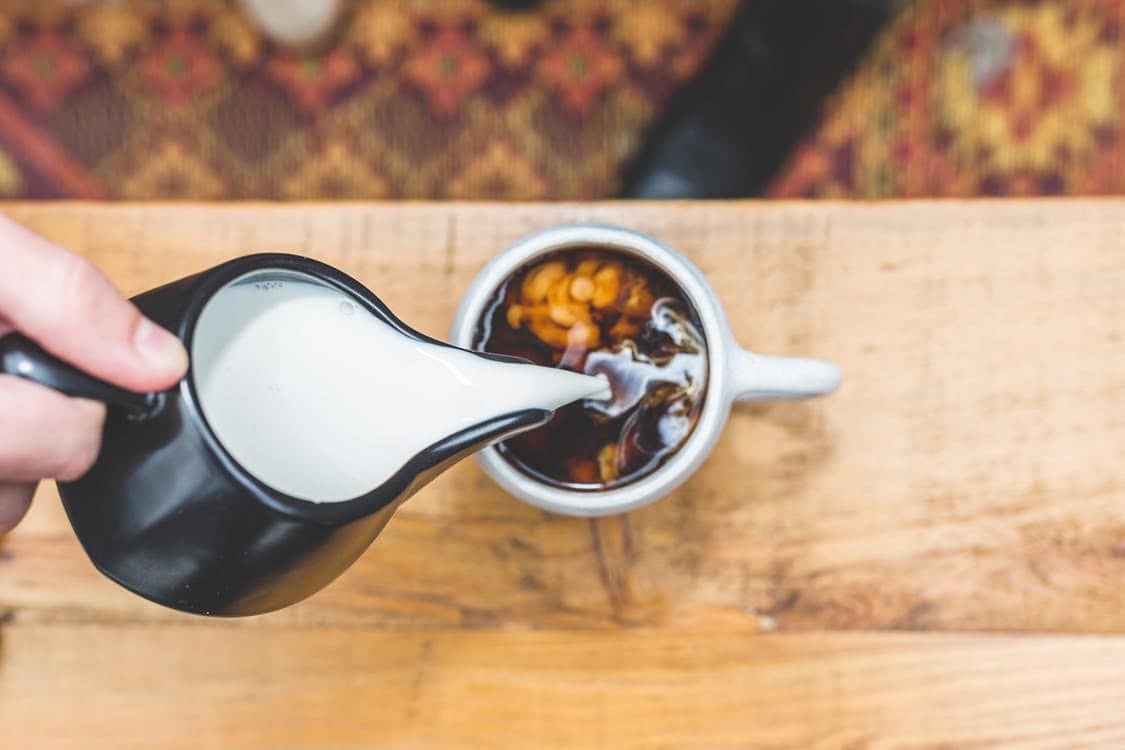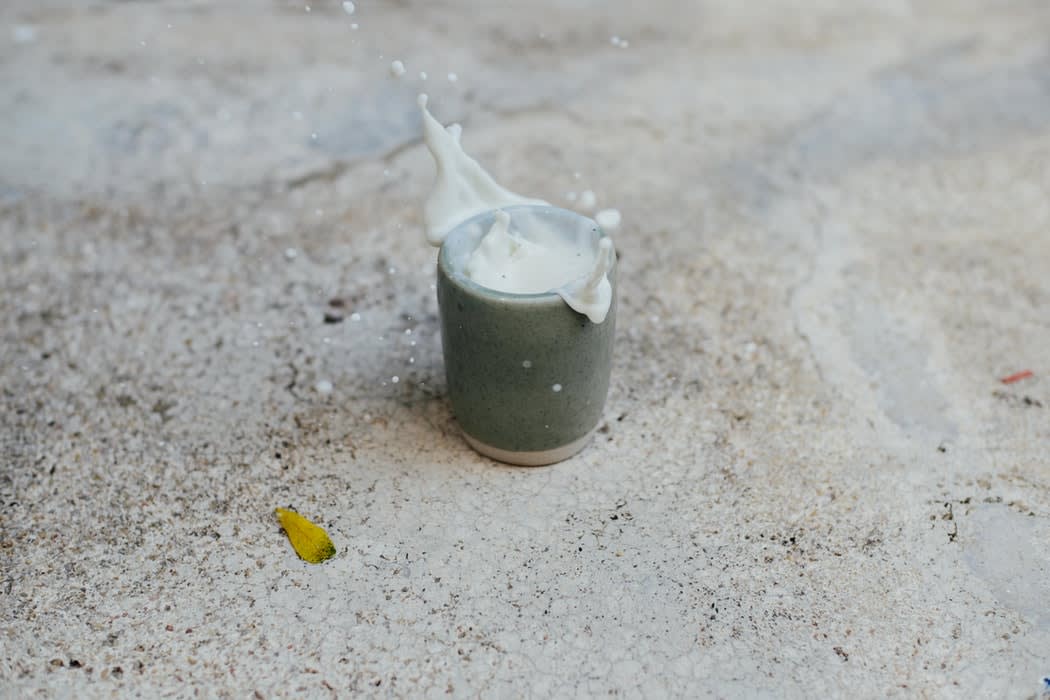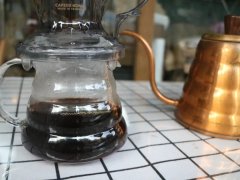What kind of milk is best for coffee? Introduction of Milk processing method most suitable for making Coffee
Professional coffee knowledge exchange more coffee bean information please follow the coffee workshop (Wechat official account cafe_style)
When did you bake your coffee? What kind of treatment? What baking degree? I'm sure people who make coffee must have a way to answer these questions.
But if you are asked what kind of milk is used, you may not be able to answer directly. You have to look at the label on the package.
When coffee is mixed with milk, take cappuccino, for example, a whole cup may be 2/3 of milk, you have to pay as much attention to the quality of coffee and milk.
The author uses several different types of milk, but the differences between soy milk vs almond milk and full-fat vs low fat are not discussed here. Although these are also important, this paper focuses on the treatment procedures of milk: raw milk, heating sterilization, high temperature treatment, etc. Let's learn about the differences and how they will present the flavor of cappuccino.

Barista injects steamed milk to make flower pull, source: Contrast Coffee
The main treatment of milk
Here we need to discuss some technical issues first.
The latest fresh milk that is least processed and available to people is "raw milk", which is unpasteurized and homogenized milk. A more detailed explanation is as follows:
Sterilization: milk is not quickly heated and cooled to kill bacteria.
Homogenization: the fat molecules of milk are not broken down to prevent the milk from forming a cream layer on the surface.
Because raw milk has not been sterilized at high temperature, it has always been controversial. The US Food and Drug Administration has strongly warned consumers not to drink raw milk. By contrast, many French cheeses are made from raw milk, while the British Food Standards Agency believes that as long as raw milk is properly controlled, it is suitable for non-sensitive groups to drink. Critics of raw milk point out that drinking raw milk can cause food poisoning, while supporters of raw milk say raw milk is tastier and healthier (even if health issues are not supported by research).

You can also buy milk that is pasteurized but not homogenized, and, less commonly, homogenized milk that is not pasteurized. However, generally available milk is pasteurized and homogenized.
There are many forms of high temperature sterilization, of which the two most common are "high temperature short time HTST" and "ultra high temperature UHT". According to the International Dairy Association, HTST milk is heated at 72 °C for 15 seconds and still needs to be refrigerated, while UHT (also known as long-lasting milk) is sterilized and therefore does not need to be refrigerated.
These are the most common ways to process milk, but which one is more suitable for coffee?

The barista steamed the milk. Source: Tony Pramana
Experiment with different milk
First of all, each kind of coffee is different, and so is every kind of milk. Different coffee varieties, farms and coffee trees will produce different flavor coffee; different cattle breeds, cattle grazing management, feed and so on will produce different milk composition and flavor. This is the charm of the third wave of coffee. We will pay attention to the differences in the flavor of coffee cups, and we also know that different coffees do have very different flavors.
So when we experiment with different kinds of milk, we must first understand that the results cannot be generalized. If we use different brands of milk with coffee from different places, the results will be different. After all, they all belong to agricultural products.

However, actually trying this milk can help us gain a deeper understanding of the main differences. The author collected raw milk, inhomogeneous but pasteurized milk, HTST and UHT milk, and tasted them all for one round, including iced milk, milk foam, cappuccino and so on.
Espresso is Ijen from East Java, Indonesia. The coffee flavor is described as roasted peanuts, strawberry jam-like acidity and a long finish.
The following are the results of the author's test:

Flavor test of different milk, source: Tony Pramana
Raw milk
The author takes milk from a local farm in North Bandung Dago, Indonesia, and while observing how dairy farmer Mark milks, Mark tells the author some details about cow feeding. If the analogy of direct trade in coffee is "from seed to cup", milk is "from cow to cup".
When the author tastes cold milk, he can drink sweetness and thick taste. When the milk is steamed, the sweetness will decrease, and the creamy taste and texture will be more prominent. In a cappuccino, there will be a smooth taste, accompanied by caramel flavor and a slight banana flavor.
High temperature sterilization but not homogenization
Remember that there are many ways to sterilize milk at high temperature. Milk heated at 63 °C for 15 seconds is used here. Drink from the cold, you can drink a very sweet but thinner taste; steaming will increase the slightly round taste, while the sweetness can remain the same as when it is cold. However, when a cappuccino is made, it will enhance the bitterness of the coffee and give the whole feeling of over-caramelization.
So the author conducted a second experiment: using beans with roasted degree of hand-brewed coffee to boil and concentrate, and try to drink only concentrated and add two cups of milk flavor. When drinking espresso, it tastes sour; the addition of milk amplifies the fruit flavor and increases the overall sweetness of the coffee. For the author, this milk is perfect for making fruit-flavored cappuccinos (shallow baked beans).

HTST high temperature short time method
This kind of milk is the easiest to obtain and has a reasonable shelf life to increase the convenience of store use.
When cold, the author drinks with creamy taste, medium sweetness, and medium-weak texture. The sweetness of the milk increases after steaming, and then increases after making cappuccino.
However, the milk was used in the author's store for nearly a year, so baristas have become familiar with how to match the flavor of coffee to use the milk.
UHT ultra-high temperature method
For the author, the milk has a long and creamy finish, but it is so sweet that it tastes like a can. After steaming, the surface is smooth and creamy, but there are no foam. After making cappuccino, there is still no milk foam, and the flavor becomes bitter and insipid.

Barista makes pull lattes, source: Anchorhead Coffee
No matter what kind of milk we use, trying different kinds of milk will help to find out which milk is best for your coffee, and in addition to coffee, learn more about the effects of milk on your other drinks. These practices help to detect different degrees of sweetness and caramel cream, just as testing different cups of coffee can improve your taste. So try adding different milk to different coffees, and then compare the differences in flavor.
This article was written by Tony Pramana and translated from Perfect Daily Grind
END
Important Notice :
前街咖啡 FrontStreet Coffee has moved to new addredd:
FrontStreet Coffee Address: 315,Donghua East Road,GuangZhou
Tel:020 38364473
- Prev

What ingredients do you need to make an edible cup of Spanish Bon Bang coffee? how to do it?
Professional coffee knowledge exchange more coffee bean information please follow the coffee workshop (Wechat official account cafe_style) Caf Bombn Coffee (Bond Coffee) this coffee not only has an interesting name, but also has a lovely appearance. The Spanish-born Bang Bang coffee is made by adding condensed milk to the cup and then adding proportional Espresso. The transparent cup can see a layer of drift from top to bottom.
- Next

Hand-brewing coffee skills | what should be paid attention to in making hand-brewed coffee?
Professional coffee knowledge exchange more coffee bean information Please follow the coffee workshop (Wechat official account cafe_style) some time ago we talked about the three keys to avoid the failure of hand-brewing coffee: water temperature, coffee grindability and powder-water ratio, these are the three basic factors in coffee brewing! After talking about the basics, let's take a look at the advanced version. You still need to note how to make coffee by hand.
Related
- What is the meaning of lactic acid fermentation with coffee bean treatment?
- How to judge the state of foam by sound?
- How does the latte pull out the unicorn pattern? Come to get for a little trick to improve the flower pull!
- Will flower pulling affect the taste of the latte?
- Do you know the history of coffee?
- The difference between honey treatment and sun washing what is raisin honey treatment?
- What kind of milk can a novice use to make coffee foam to keep the foam longer? The correct method and skills of milking tutorial sharing
- Why do washed coffee beans taste sour? Flavor characteristics of washed Coffee
- Introduction to the skill of how to practice the size and height of water injection around the circle of hand-brewed coffee
- How do beginners practice coffee flower drawing from scratch?

